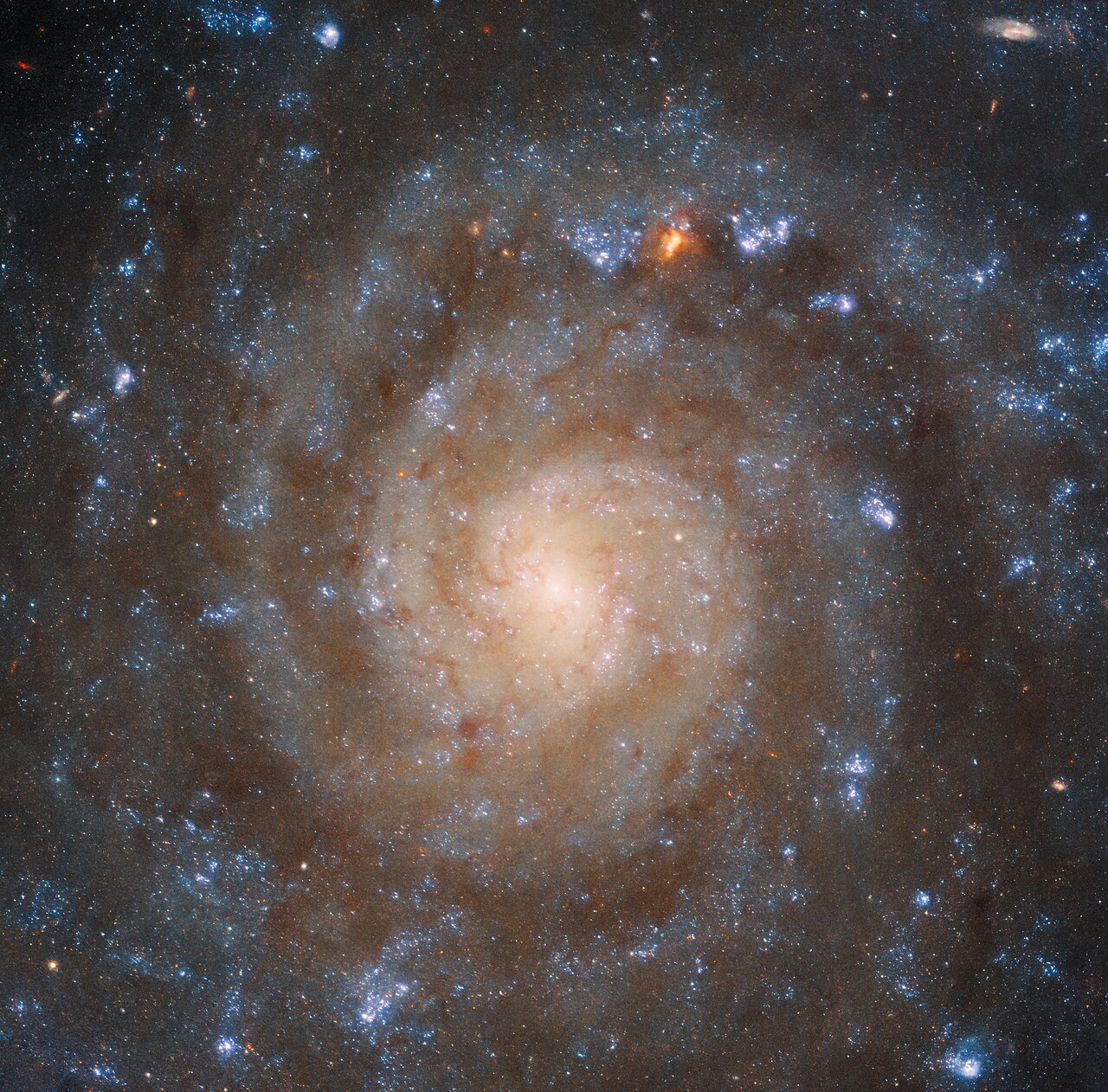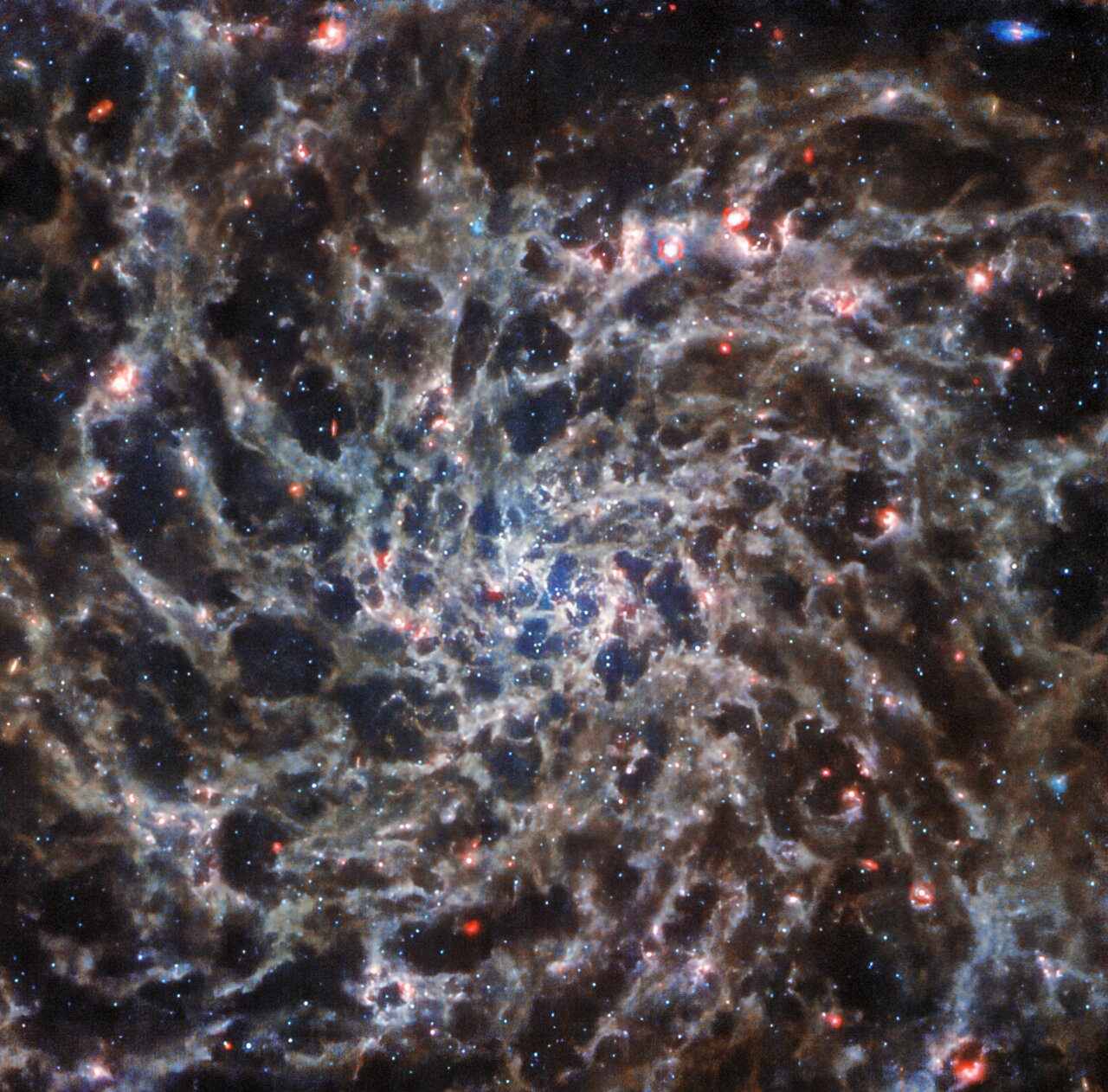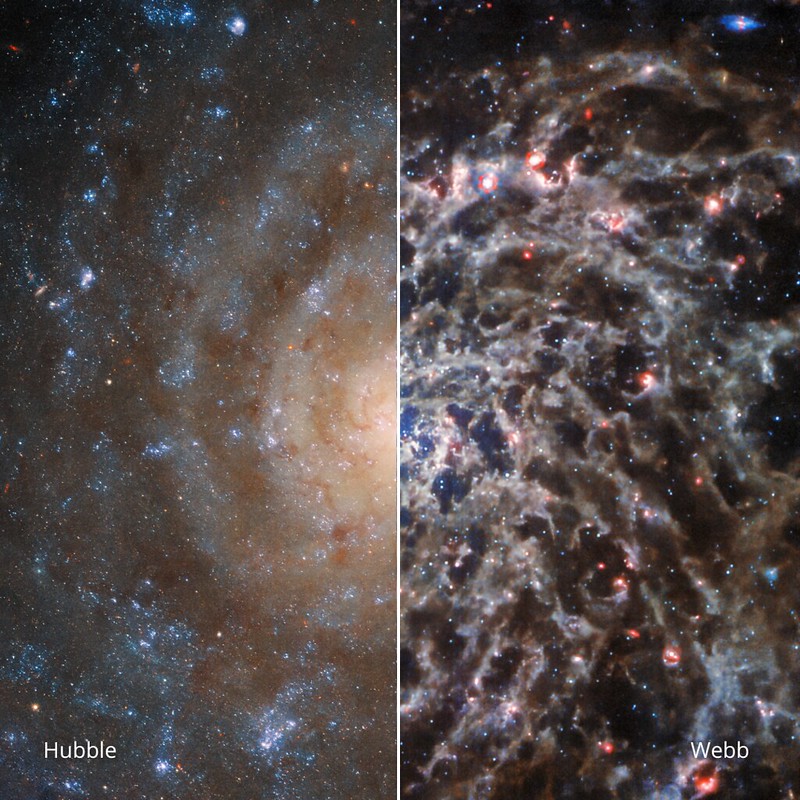James Webb Space Telescope Discovery
Clicking on each image will open the full resolution one. Try it!Clicking on "Raw images" image will yield all the relevant raw images.
Webb Reveals Complex Galactic Structures
This image from the NASA/ESA/CSA James Webb Space Telescope shows IC 5332, a spiral galaxy, in unprecedented detail thanks to observations from the Mid-InfraRed Instrument (MIRI). Its symmetrical spiral arms, which appear so clearly in Hubble’s ultraviolet and visible-light image of IC 5332, are revealed as a complex web of gas, emitting infrared light at a variety of temperatures. Capturing light at these wavelengths requires very specialised instruments kept at very cold temperatures, and MIRI performs spectacularly at the task.
IC 5332 lies over 29 million light-years from Earth, and has a diameter of roughly 66 000 light-years, making it about a third smaller than the Milky Way. It is notable for being almost perfectly face-on with respect to Earth, allowing us to admire the symmetrical sweep of its spiral arms.
Credit: ESA/Webb, NASA & CSA, J. Lee and the PHANGS-JWST and PHANGS-HST Teams
 IC 5332
IC 5332
 Hubble Sees the Big Picture of a Complex Galaxy: The winding spiral structure of the galaxy IC 5332 is portrayed in amazing detail by this image from the NASA/ESA Hubble Space Telescope. The clarity of Hubble’s Wide Field Camera 3 (WFC3) separates the arms of the galaxy from dark patches of dust in between, which block out the ultraviolet and visible light Hubble is sensitive to. Younger and older stars can be differentiated by their colours, showing how they are distributed throughout the galaxy. Meanwhile, Webb’s MIRI image provides a very different view, instead highlighting the patterns of gas spread throughout the galaxy.
Hubble Sees the Big Picture of a Complex Galaxy: The winding spiral structure of the galaxy IC 5332 is portrayed in amazing detail by this image from the NASA/ESA Hubble Space Telescope. The clarity of Hubble’s Wide Field Camera 3 (WFC3) separates the arms of the galaxy from dark patches of dust in between, which block out the ultraviolet and visible light Hubble is sensitive to. Younger and older stars can be differentiated by their colours, showing how they are distributed throughout the galaxy. Meanwhile, Webb’s MIRI image provides a very different view, instead highlighting the patterns of gas spread throughout the galaxy.
 Webb Reveals IC 5332 (scaled)
Webb Reveals IC 5332 (scaled)
 IC 5332 - Hubble and Webb
IC 5332 - Hubble and Webb
 Raw images
Raw images